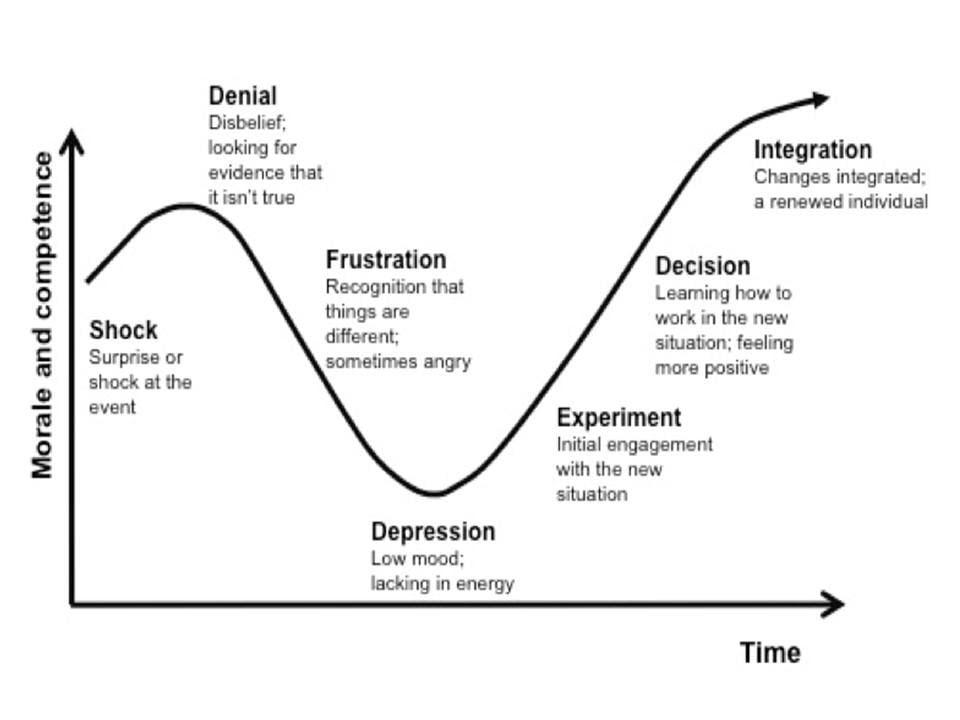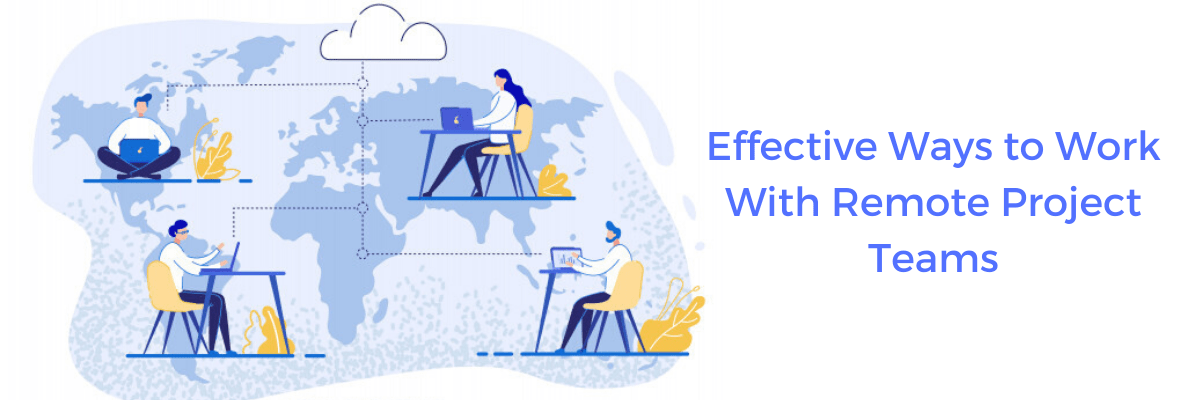Effective Ways to Work With Remote Project Teams
Introduction
Over two decades in project management, I’ve seen marked evolutions in how we engage teams and call out accountabilities. But nothing has been as immediate or sweeping an evolution as remote work in the face of coronavirus disease 2019. An infectious disease, COVID-19, is caused by severe acute respiratory syndrome coronavirus 2 (SARS-CoV-2). Originating in Wuhan, China, in December 2019, it then spread globally, resulting in the ongoing 2019–20 coronavirus pandemic.
In the US, nearly nine out of 10 companies have encouraged or required employees to work from home as part of physical distancing measures in response to the pandemic.
Here in San Francisco, teams have been remote since March 16th. Measures were first enforced for three weeks, then extended for another four, and are likely to be extended again. Having no visibility to what lies ahead, we’ve had to throw out the rule book and feel our way forward.
Remote work success conditions
Remote work is nothing new. In fact, 99% of people would like to work at least some of the time remotely.
And, from 2005 to 2017, remote work close to tripled. But with entire workforces now working remotely for a time unknown, the remote project manager has more on their plate than ever.
Here are 15 success conditions for managing remote teams.
- Ensure the entire team is equipped with devices, software, and internet access and know-how to use them. Check-in with them individually to confirm how they’re set up and how comfortable they are using the necessary tools.
- Set daily checkpoints with clearly defined output expectations for everyone. Monitor productivity rather than hours worked.
- Differentiate engagement tactics. Preferences on how to connect will vary between introverts and extroverts. Send out a quick survey with the different options and allow each employee to identify the methods that work best for them.
- Reset ground rules, incorporating flexibility wherever possible. Early birds may be most productive at 5 am and night owls at 8 pm. Show that you trust them by giving them the latitude to choose when to buckle down.
- Facilitate overlapping connection times for communicating across time zones and for employees working at different times of the day.
- Revisit strategic focuses, validating what can still run as it used to, and what may need to pivot. Ask the team for their input and show them how that factors into the calls being made. Make them feel heard and seen.
- Videoconference at least once per day. Body language conveys 55% of communication, voice tone 38%, and words 7%, so those visual clues are crucial. Plus, seeing fellow team members in their home environment breeds vulnerability, which helps teams get closer and more trusting.
- Run chats where people can share brief questions and updates throughout the day. But keep them targeted to avoid overwhelming teams with distractions to the point that it slows productivity.
- Break down tasks to their smallest components to facilitate progress tracking. Identify when performance is above or below expectations, and identify what approaches prove most effective best for each employee.
- Emphasize that work needs to be shared while still rough so the team can help guide direction while outputs are still malleable to improve accuracy and comprehensiveness while avoiding rework.
- Don’t assume people understand what’s expected of them in a remote world. Build and socialize a visual one-pager that clarifies communication expectations, meeting rhythms and etiquette, and conduits for feedback.
- Set up regular, informal video chats between distributed team members to share fledgling ideas. The best innovations often stem from water cooler conversations.
- Discuss aspirations with team members and identify what skills they need to get there. Arrange video-based coaching for those with common skill gaps. And align on opportunities for them to start invoking those skills in their outputs.
- Keep the team informed on company performance and direction. A big part of managing remote employees is showing them where they fit in and how they contribute to the bigger picture.
- Get everyone involved in important events and projects to build more in-depth connections, inject some variety and excitement into their day, and get a view of previously unseen strengths.
“Strive not to be a success, but rather to be of value.”
- Albert Einstein
Along with the above mentioned 15 success conditions for managing remote teams, another responsibility of the remote project manager is to ensure smooth training of employees and in the current situation, remote training becomes all the more important. Read more about the benefits of Remote Training and the best practices to implement training for your WFH employees.
Reassuring remote teams in uncertain times
Even with these success conditions in place, there remains an underlying need to understand how to get comfortable moving forward in times of uncertainty, when everything is changing. Profound shifts in how and where teams work can lead to anxiety, and these sweeping changes can be hard to register, believe, and accept.
For decades, business leaders worldwide have been using a tool to help their teams do just that. Based on Swiss American psychiatrist Elisabeth Kübler-Ross’s five stages of grief: Denial, Anger, Bargaining, Depression, and Acceptance, the Kübler-Ross Change Curve is the most reliable tool for understanding how to help teams adapt to change.
Figure 1. Kübler-Ross Change Curve

While the change curve presents as a linear model, people may move forward, then stall, then move backward, or any combination thereof. What the model provides is a structure from which to identify:
- where each of your team members is,
- how they’re progressing, and
- how to help them progress through the change curve as speedily and favorably as possible.
When the change first comes to light, employees may be in shock or denial and blame others as the status quo shifts. Then they could be expected to move to the second stage, blaming themselves.
Should team members stay in either of these mindsets, the change won’t succeed. This is an unproductive time as employees feel quite stressed about the change and, unfortunately, it often lasts awhile.
While the third stage brings about doubt and bewilderment, that’s positive because it’s the beginning of moving on. Employees may seek clarifications on how they carry on with their work.
Once any confusion has been put to rest, the employee will shift to the fourth stage - from focusing on what was, to accept the changes. They start exploring what the changes mean learning what they like and don’t, and how to adapt. From this stage, employees often slip back to doubt.
In the fifth stage, solutions and problem solving, employees begin to look favorably on the changes and revisit their work approaches. This is when leaders can start reaping the benefits and seeing innovations.
Finally, in the sixth stage, the new reality begins to feel more like the new status quo. The lessons learned process can identify what went well, what didn’t, and what to do next time. Each employee better understands how to embrace change and cements a new skill set. Changes now start to become second nature. Take time to mark the shift and celebrate the efforts of all involved, establishing a track record of success and engender a more change friendly organization.
How to help teams move forward
Unless management actively encourages forward motion through the change curve, they’ll find employees stuck and resisting the change.
What should you do if you recognize that an employee is stuck on the curve? The answer isn’t the same for everyone. And understanding each employee’s personality type will be critical to helping them along.
Should your employee be stuck in shock, self-doubt, or bewilderment, consider whether they’ve been provided the necessary information, consider the change necessary, see it as positive, and take the view that the risks have been given the appropriate weight. Also, try to determine whether they’ve had enough time to come to terms. Engage to mitigate groupthink by emphasizing the benefits. Be open to all feedback and allow the employees to vent.
If, on the other hand, they’re vocally blaming others and had no say in the change, they may feel the change is being forced upon them without due process. Be sure to seek their input and ensure they feel heard of getting them onside. Also, allow them to vent without trying to fix the problem. It may take some time, but patience here often results in substantial progress.
Should they be stuck on uncertainty, offer guidance, and context. Make the business value clear. If they’re stuck on acceptance, engage them in brainstorming and make it known that you’re in full support. Keep an eye out for potential backsliding into confusion. Hold workshops to walk through the processes and roles, soliciting their input to solidify engagement.
Conversely, if they zipped through the change curve but end back at the confusion, consider whether they so change friendly that they skipped over the details and jumped in feet first. It may be time to revisit the information and coaching provided to help the change stick.
Once your employee has completed their journey through the curve, prompt them to consider what they’ve learnt about themselves through the process.
Conclusion
The world is changing faster than ever. Getting the most out of your employees and teams necessitates concrete success conditions, from ensuring everyone is well set up to involving everyone in projects and events.
Beyond that, the most successful management teams will understand how this unprecedented change is impacting their employees. And make it a point to help them cope, adapt, and move on.
The simpler you make this path to walk, the higher the benefits your employees, teams, and organization will reap. And the better prepared you’ll all be to face whatever else may come together.
